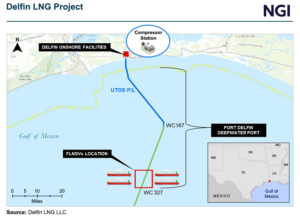Diamondback’s Curtailed Permian Oil Volumes Ramping Up, with Some Completion Crews Back to Work
Permian Basin pure-play Diamondback Energy Inc., which undertook a nearly three-month break from completion activity and shut-in wells as Covid-19 stormed the oilpatch, has brought back online nearly all of the volumes, but it has set full-year production guidance lower.

The Midland, TX-based independent voluntarily curtailed 9,000 b/d (16,100 boe/d) during 2Q2020, mostly in May, but it began ramping up in June, with “nearly all” production now back online. Output between April and June averaged 176,000 b/d, or 294,100 boe/d.
“Diamondback made the decision to preserve value in the second quarter by suspending almost all completion activity and curtail 5% of full-quarter oil production due to the most volatile oil price market in recent history,” CEO Travis Stice said.
“With oil prices having recovered significantly since the decision to curtail production was made in April, Diamondback returned this production through the month of June with minimal associated cost. We brought two completion crews back to work in June, and a third crew in July.”
The additional completion crews allow Diamondback to “honor our lease obligations and subsequently stem production declines, which we expect to do by the fourth quarter of 2020 after production bottoms in the third quarter.”
As Covid-19 began clipping demand, Diamondback in early March cut completion crews to six from nine. It also launched a fracture/completions holiday.
Full-year production guidance in late March was revised lower to 295,000-310,000 boe/d. However, guidance now has been reduced to 290,000-305,000 boe/d. Oil production this year is expected to be 178,000-182,000 b/d. During 4Q2020, output is expected to average 170,000-175,000 b/d, or 280,000-290,000 boe/d.
“Diamondback believes it can maintain 4Q2020 oil production through full-year 2021 with a capital budget 25-35% less than 2020’s capital budget,” management said.
Capital expenditures (capex) has been lifted slightly for the year to $1.8-1.9 billion after being reduced in March by up to 30% year/year to $1.5-1.9 billion. Around 205-216 wells (gross) are set to be drilled this year, with 153-180 net completed using average lateral lengths of 10,000 feet. By year’s end, 110-140 wells are expected to be drilled but uncompleted, aka DUCs.
“This year has brought many challenges, including a much different production and capital profile than originally expected,” Stice said. “Returning completion crews to work later than originally anticipated put a deeper hole in our production profile for the year, and therefore we have revised full year 2020 oil production guidance lower by 4% at the midpoint, as we continue to provide guidance for purposes of transparency.
“From an activity perspective, we elected to finish out our rig contracts and limit cash costs associated with early termination fees. Accordingly, our operated rig count declined from 20 rigs on March 31 to seven today. As a result, along with the fact that Diamondback reports cash capital expenditures that match our cash flow statement, which is unique in our industry, we spent $562 million of cash capex in the second quarter.”
Diamondback’s capital costs in 2Q2020 totaled $348 million, Stice noted. The company now expects cash and capex to decline in the second half of 2020, “normalizing by 4Q2020 at a trend in line with our 2021 maintenance capital run-rate.”
Under current commodity prices, Diamondback expects to generate free cash flow in the second half of 2020 and into 2021, Stice said. Assuming current market conditions continue, up to six drilling rigs and four completion crews are planned through the rest of the year.
During 2Q2020, average realized hedged prices were $35.21/bbl oil, $7.17/bbl natural gas liquids and 33 cents/Mcf natural gas, resulting in an average of $22.95/boe. Diamondback realized total hedging gains of $211 million in the quarter, including $11 million of realized gains from the early termination of 10,000 b/d of 3Q2020 oil hedges. The company said it has 168,000 b/d of oil protected in the second half of 2020, and around 85,500 b/d hedged in 2021.
© 2024 Natural Gas Intelligence. All rights reserved.
ISSN © 2577-9877 | ISSN © 2158-8023 |


